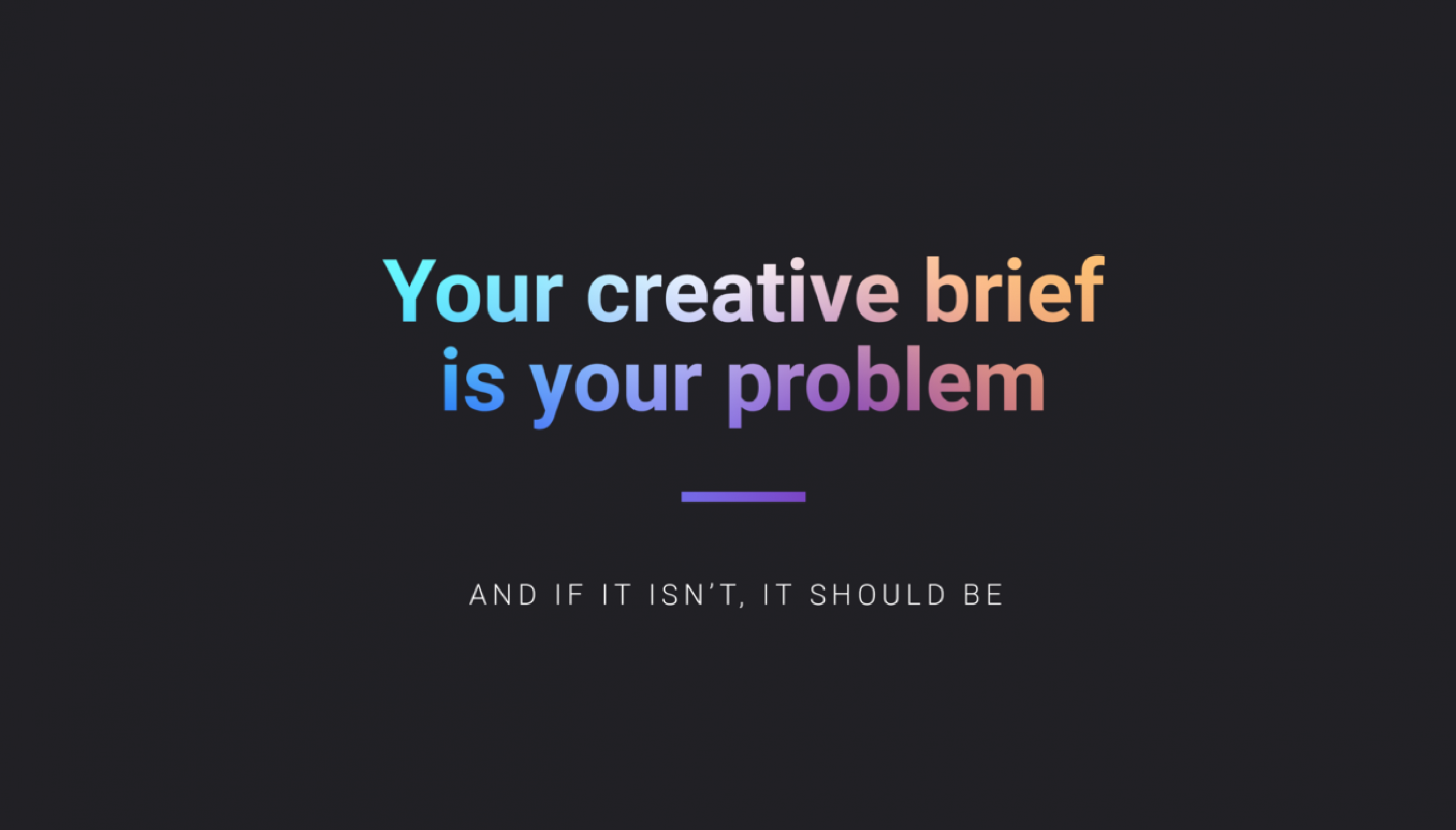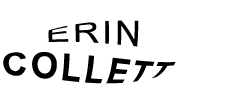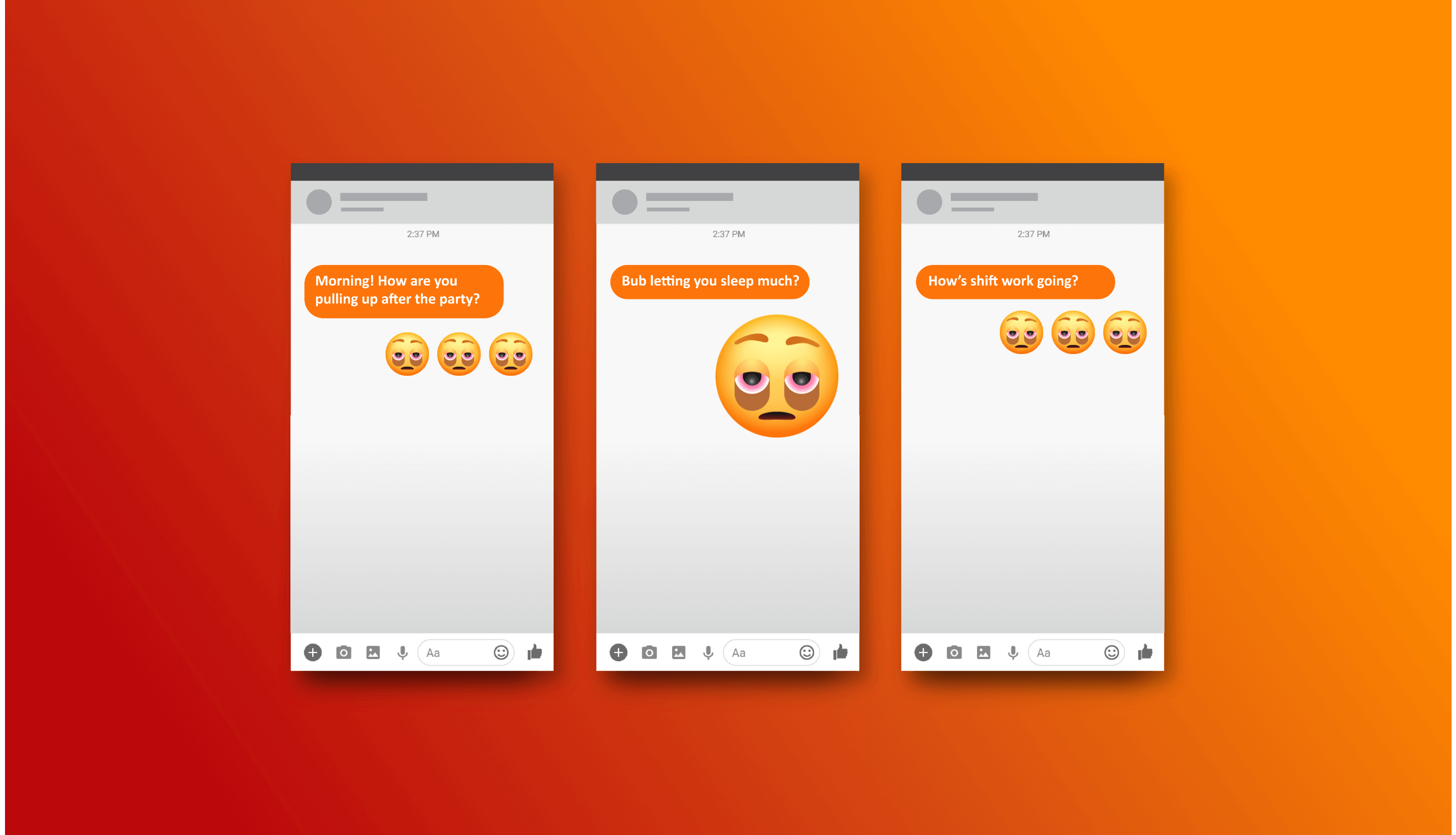
Your creative brief is your problem
… and if it isn’t, it should be.
That is — literally and peacefully 🏳️— your creative brief should focus on communicating the problem you want to solve. Not the solve itself.
Too often, the potential of a creative brief is lost in half-baked ideas, predictable lists of collateral, or ‘due yesterday’ deadlines. Sometimes, it’s all three (the horror! 😱). The risk in briefing any of these is that you might get exactly what you’ve asked for… and no more.
Could there have been a more strategic, impactful idea to underpin it all? What untold brilliance might you and your creative team have been capable of had you teamed up earlier?
See, the true value of creative folk is not just in our ability to churn out pretty things (which of course, we do very well), but in our ability to affect meaningful change through strategic solutions that exist beyond the obvious or expected. Without this deeper level of insight, a pretty design won’t mean a lot to anyone. It certainly won’t do much to solve the problem at hand.
Before the pretty things are even considered, your brief needs to establish the framework against which ideas can be measured — to enable the manifestation of an idea so powerful it can persuade a large group of people to stop what they’re doing, give your message their undivided attention above all others, and take a particular action. This idea must simultaneously act to solve your problem, whilst also aligning with your organisation’s greater vision, purpose and brand voice. This is no easy feat.
To come even close to achieving this, every creative output (be it a poster, tweet, hologram, dance move) must clearly align with the idea and your brand’s strategic intent. The creative strategy combined with this unwavering focus and consistency is key.
Sure, sometimes the first instinctive idea is the best idea, but by saying “yes” to an idea too early you’re actually saying “no” to all of the other possibilities… and we don’t even know what those are yet. Who knows, one of them could be pretty big.
To bring that big idea a little closer, here are eight tips for crafting a creative brief that hits the mark.
- Concisely define the crux of the problem, followed by its symptoms.
- Define how solving this problem will support your organisation’s overall vision and purpose. How does this fit into the bigger picture?
- Define what success looks like. Is it a specific shift in perceptions or behaviour? An increase in market share?
- Be clear on your brand. Who are you and what do you stand for? What makes you inimitably different from the rest?
- Define and know your audience. (Hint: It’s not everyone). How does your audience feel about you right now? How do you want your audience to feel about you? How have you communicated to them previously?
- Identify who’s stealing your thunder (ie. those pesky competitors) and why.
- Specify any hard deadlines or other non-negotiables.
- Finally, distill it down. Then distill it down again (and again) until it fits on a single A4 page. A ‘brief’ brief is a good brief.
So, don’t be shy about making your problem, our problem. Let’s get in there early, be open to the unexpected, combine our expertise and solve it together. It’s from here that truly strategic, results-driven creative can explode.
Intrigued? Good! Hit me up and let’s make some magic.




